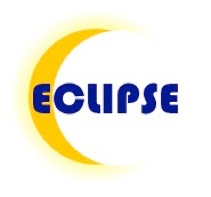Analogy generation is a very important part of the creative process in science.
The following examples were recorded during a session at the ASCEND project, a programme of after school enrichment for able 14-15 year old science students from Cambridge comprehensive secondary schools.
The Science Analogy game was intended as a fun activity, that was used during the conference style registration and refreshments period at the start of one of the ASCEND sessions. The Science Analogy game is a card game where players have to construct analogies between science concepts and various everyday ideas or phenomena.
(The materials for the game are available as part of the SEP Publication, 'Enriching School Science for the Gifted Learner' - the text of which may be obtained hereGifted.html) The ASCEND materials as published on the CDRom are all available from the National STEM Centre eLibrary.. Resources on the site can only be accessed by those registered, but registration is free. Once registered you will have access to an growing library of electronic resources.
Recordings were made (with the agreement of the students) of two groups of students who played the game in the Faculty Cafeteria at the University of Cambridge during the ASCEND project. The students had minimal introduction to the game (they had a set of written instructions), and had never played it before - so this was a novel task.
The students in the two groups suggested a wide range of suggested similarities between the science concepts and everyday concepts. (Some of these could not be fully made out in the recordings.)
Not all of the suggestions put forward by the students met the criteria of an analogy where there is a mapping of a structural similarity between two systems. The various suggestions that could be identified form the recordings are presented below.
Some of the mooted analogies were limited to identifying similarities, so were in effect student-generated similes rather than fully developed analogies.
Some of the suggestions students offered had more of the form of genuine analogies, showing a structural similarity with (rather than something in common with) the target scientific concept.
| Target science concept | Analog | Mapping |
|---|---|---|
| acceleration | holidays | acceleration is like holidays because acceleration is a change of speed (whereas) holidays is a change of place |
| alkali | United Nations | The United Nations are like an alkali (as) they neutralise disagreement in the world (as an alkali nutralises an acid) |
| Cell | ant | a cell is like an ant . . . small things but when they work together they can make up organs . . . the ants when they work together (? make up a colony) |
| cell | brick | a cell is like a brick (as) they’re used to build up the body (implicit: whereas bricks build up a house/building |
| chemical reaction | cola | A chemical reaction is like cola because people can never tell whether they’ve got diet coke or real coke and in chemical reactions you can never quite tell what elements are there unless you’re really, really good at it |
| condensing | death | condensing is like death (as) it’s where you change from one state to another - from living to dead, from gas to liquid |
| molecule | Africa | a molecule is like Africa because is one little thing (!) in a mass of other countries and big things that makes up the world (implicit: where a molecule is one small part of something much larger) |
| molecule | Bible | A molecule is a complex arrangement of atoms and a bible is a complex arrangement of stories and books and things |
| nucleus | brain | the nucleus is like the brain because the nucleus controls what the cell does and the brain controls what we do |
Return to ECLIPSE homepage
List of science topics

Dr Keith S Taber kst24@cam.ac.uk
University of Cambridge Faculty of Education
© Keith S Taber, 2012-2013